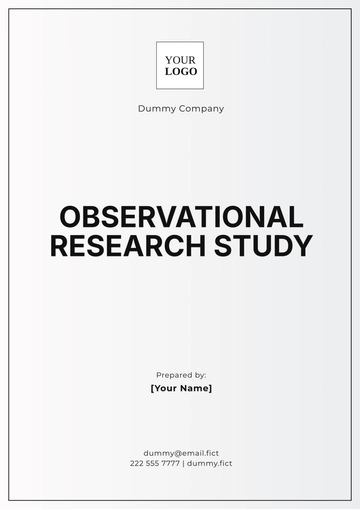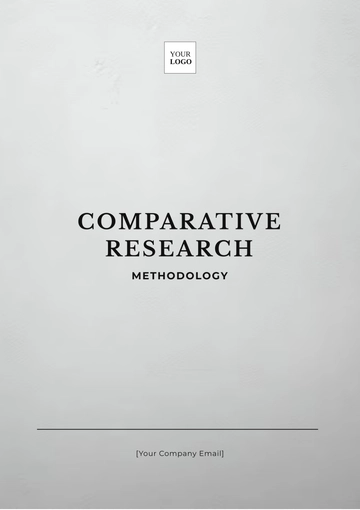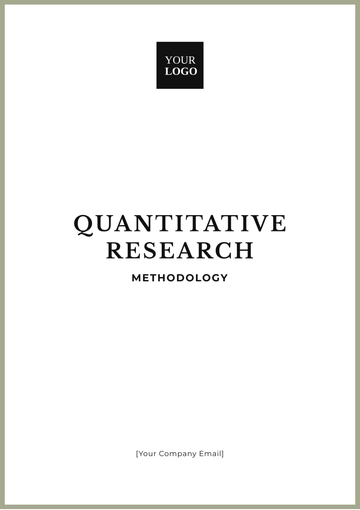Comparative Research Methodology
Written By: [Your Name]
I. Introduction
Comparative research methodology involves systematically comparing different entities to understand their similarities and differences. This approach is crucial in identifying patterns, generating hypotheses, and formulating theories across diverse fields such as sociology, anthropology, political science, and economics. This document serves as a comprehensive guide for designing and conducting comparative research, ensuring that studies are systematic, robust, and insightful.
II. Research Design
The research design provides the blueprint for conducting the comparative study, ensuring methodological rigor and reliable findings.
1. Defining the Research Problem
Identify the Phenomenon of Interest: Clearly articulate what you are studying and why it is significant.
Formulate the Primary Research Question: Develop a focused question that drives the comparison.
Determine the Objectives of the Study: Outline what the study aims to achieve and how it contributes to the field.
2. Selection of Case Studies
Identify Criteria for Case Selection: Develop criteria based on relevance, comparability, and diversity.
Select Cases: Choose cases that meet these criteria and offer insights into the research question.
Ensure Diversity and Representation: Aim for a range of cases to avoid bias and ensure generalizability.
3. Determining the Variables
Specify Variables: Identify the key variables or categories to be compared.
Select Indicators: Choose appropriate and measurable indicators for each variable.
Ensure Comparability: Ensure consistent variable definition and measurement.
4. Formulating Hypotheses
Develop Hypotheses: Base hypotheses on clear, testable theories and literature.
Specificity: Ensure hypotheses are tailored to the selected cases and variables.
Guide Data Collection and Analysis: Use hypotheses to guide research and interpret results.
III. Data Collection
Data collection involves gathering the necessary information for analysis. This can be done through multiple methods to ensure comprehensive coverage.
1. Primary Data Collection
Surveys and Interviews: Conduct surveys and interviews to gather data.
Observational Methods: Use observation to gather data on behaviors and contexts.
Questionnaires: Administer structured questionnaires to collect standardized responses.
2. Secondary Data Collection
Existing Literature: Review and analyze existing studies and academic papers.
Official Reports and Statistics: Utilize data from official reports.
Historical Records and Archival Data: Utilize historical and archival sources for additional context.
3. Data Triangulation
Combine Data Sources: Use multiple sources to provide a comprehensive view.
Different Methods: Employ various data collection methods to enhance validity.
Cross-Verification: Verify data from different sources and methods to ensure reliability.
IV. Data Analysis
Data analysis involves examining collected data to identify patterns, relationships, and insights.
1. Qualitative Data Analysis
Thematic Analysis: Identify and analyze themes and patterns in qualitative data.
Content Analysis: Interpret and categorize textual data.
Coding Methods: Develop coding schemes to organize and analyze qualitative data.
2. Quantitative Data Analysis
Descriptive Statistics: Summarize data with statistical measures.
Inferential Statistics: Test hypotheses and infer population traits from samples.
Regression Analysis: Analyze relationships between variables to identify trends and correlations.
3. Comparative Analysis
Cross-Case Analysis: Systematically compare cases for similarities and differences.
Identify Patterns: Look for common patterns and unique occurrences across cases.
Variable Comparison: Analyze how variables and indicators differ or align across cases.
V. Interpretation and Reporting
Interpret and present findings in a clear and accessible manner to communicate results effectively.
1. Interpretation of Results
Draw Conclusions: Analyze data to address the research question and understand its implications.
Compare with Literature: Relate findings to existing studies and theories.
Discuss Implications: Explore the results' broad implications for theory and practice.
Identify Limitations: Acknowledge any limitations and potential biases in the study.
2. Reporting the Findings
Prepare a Research Report: Draft a detailed report on methods, findings, and conclusions.
Use Visual Aids: Include charts, graphs, and tables to illustrate key points.
Ensure Accessibility: Write in a clear, structured format that is accessible to the intended audience.
VI. Conclusion
Comparative research methodology is a powerful tool for exploring and understanding complex phenomena across different contexts. By following the outlined steps, researchers can ensure that their studies are systematic, rigorous, and insightful. This methodology not only helps in identifying underlying patterns and relationships but also contributes significantly to the advancement of knowledge across various fields.
Methodology Templates @ Template.net






























